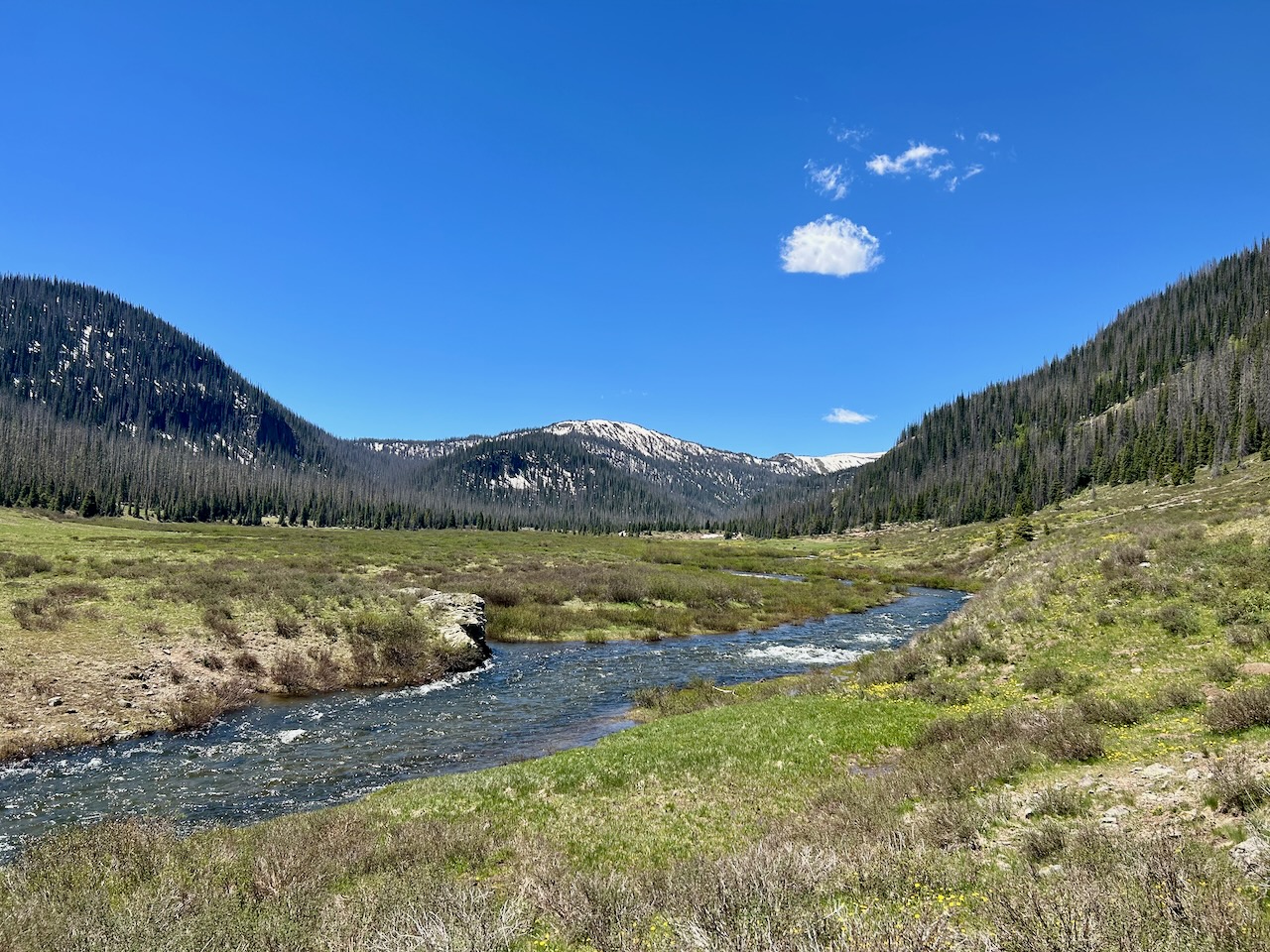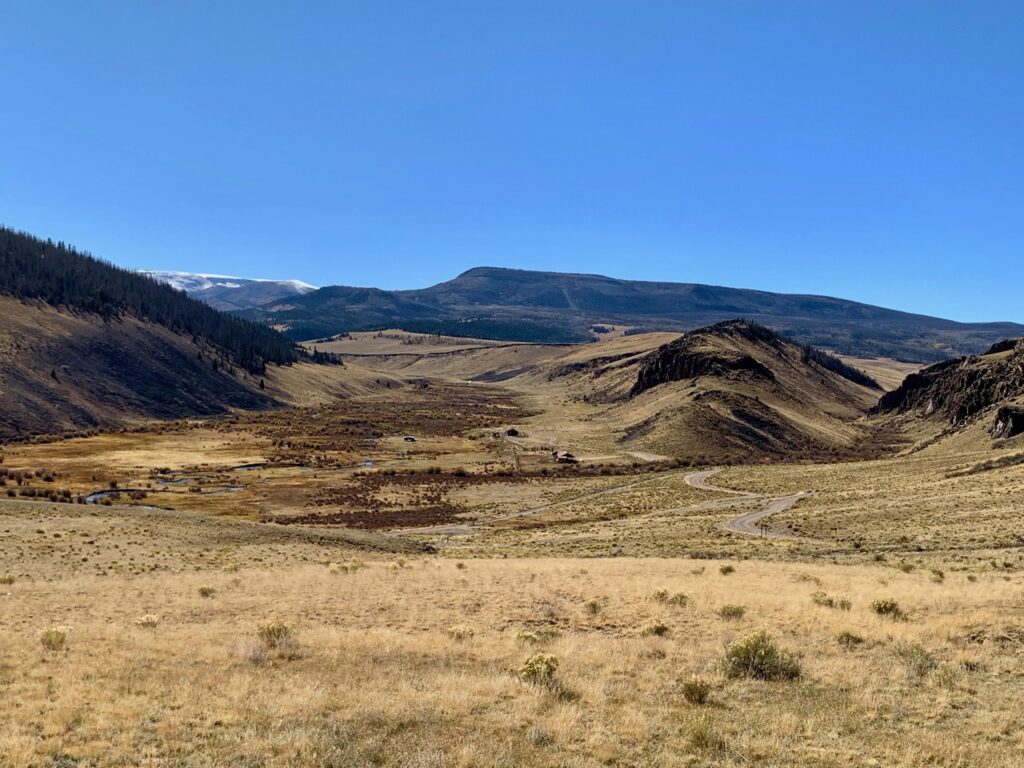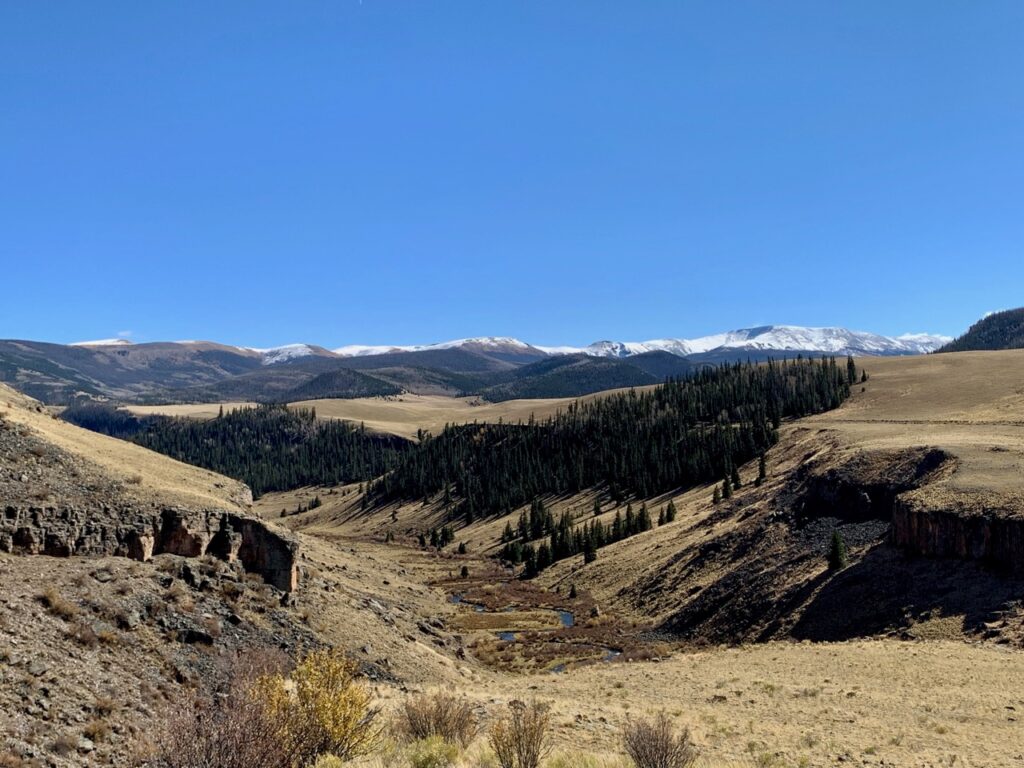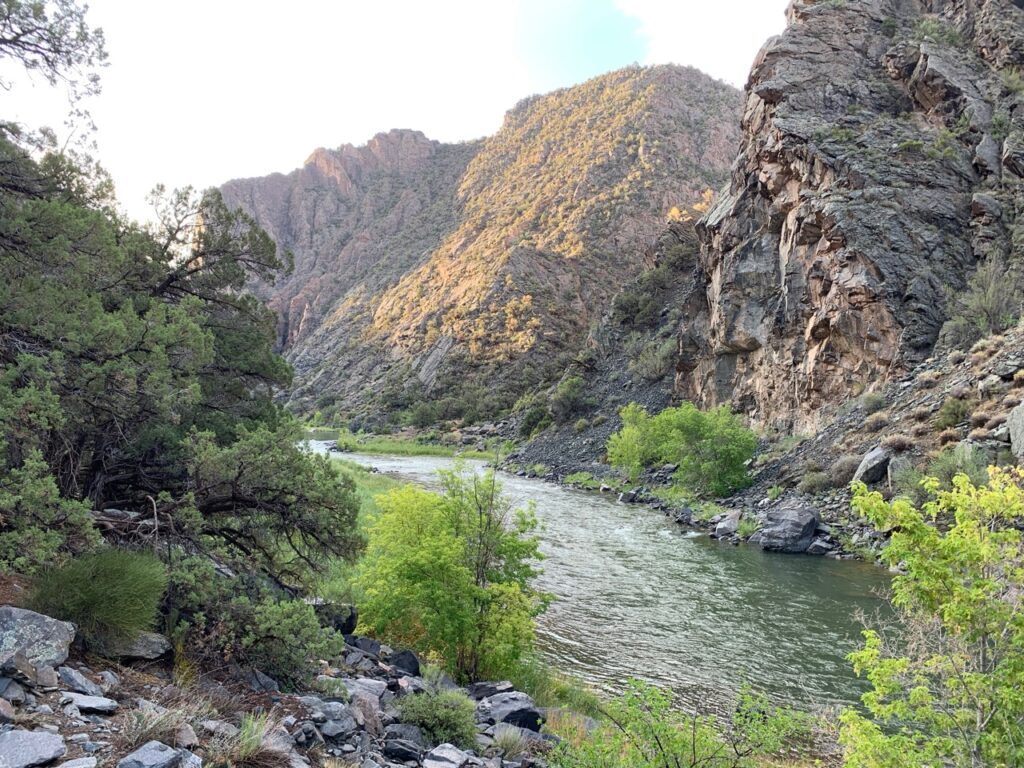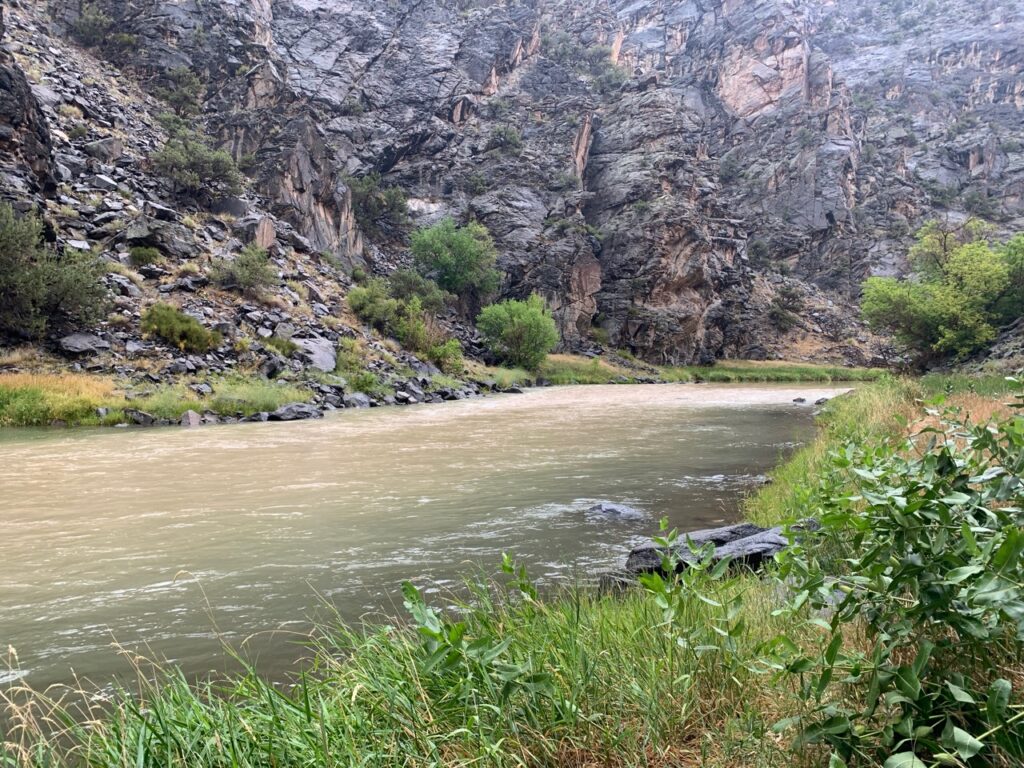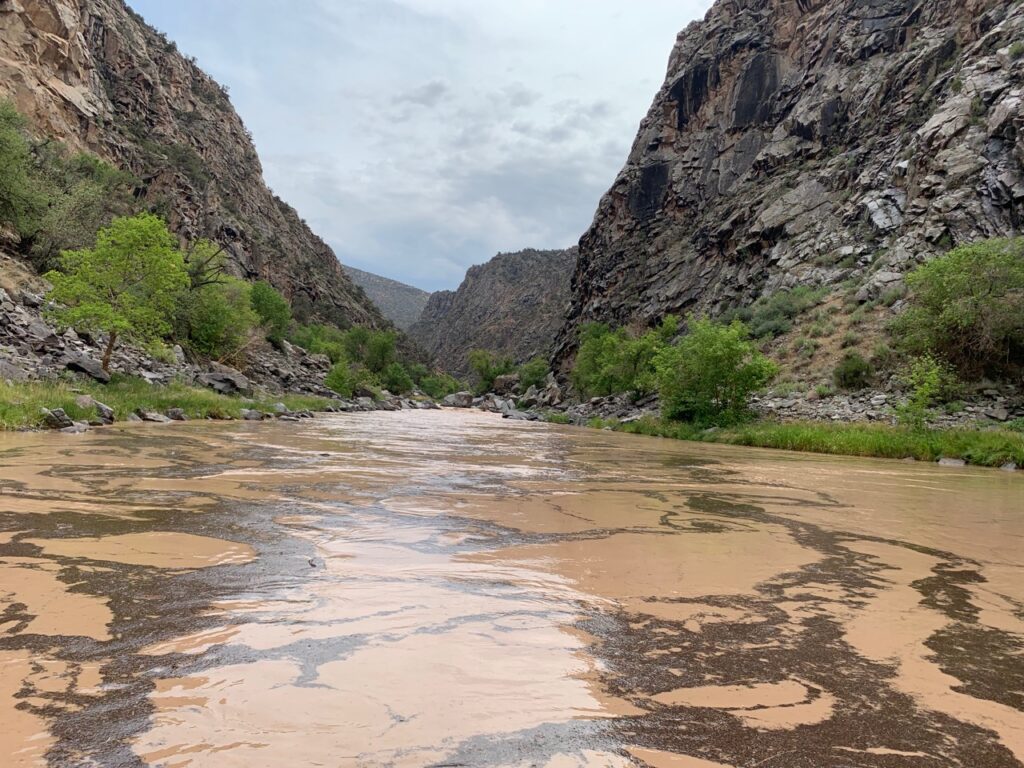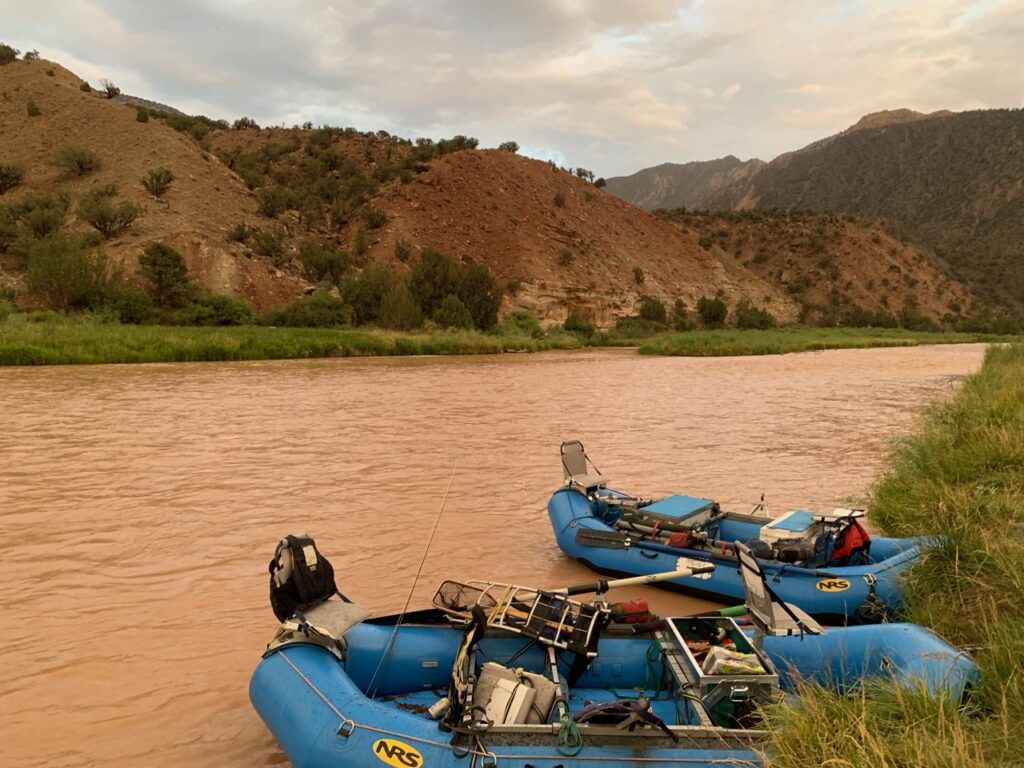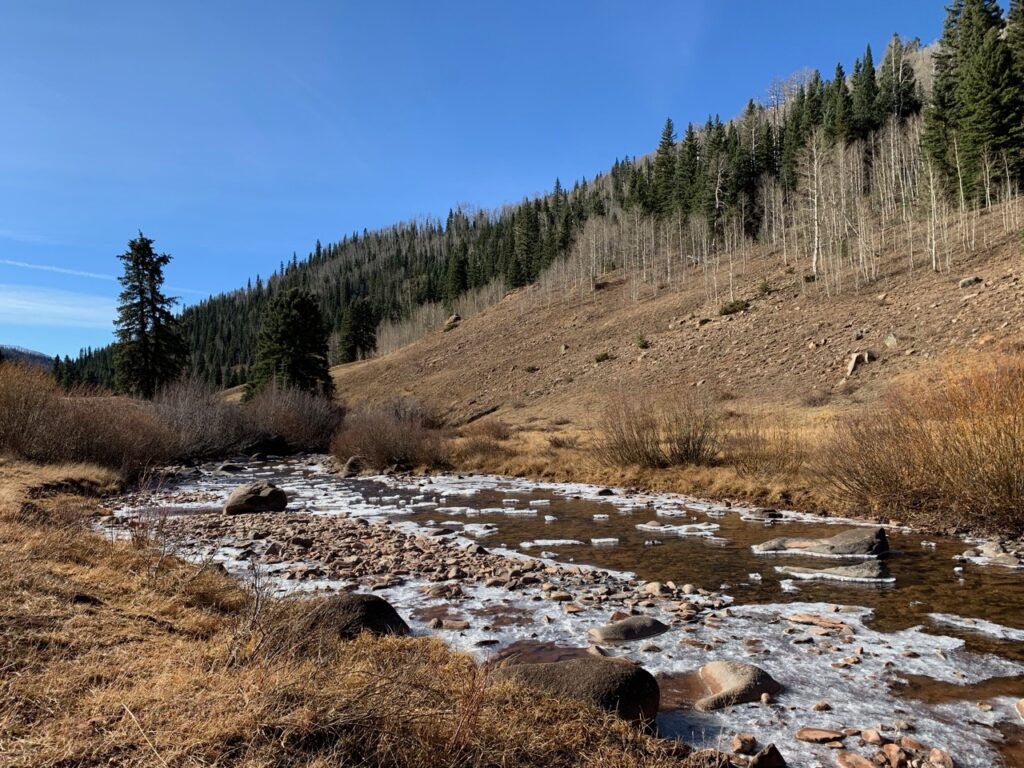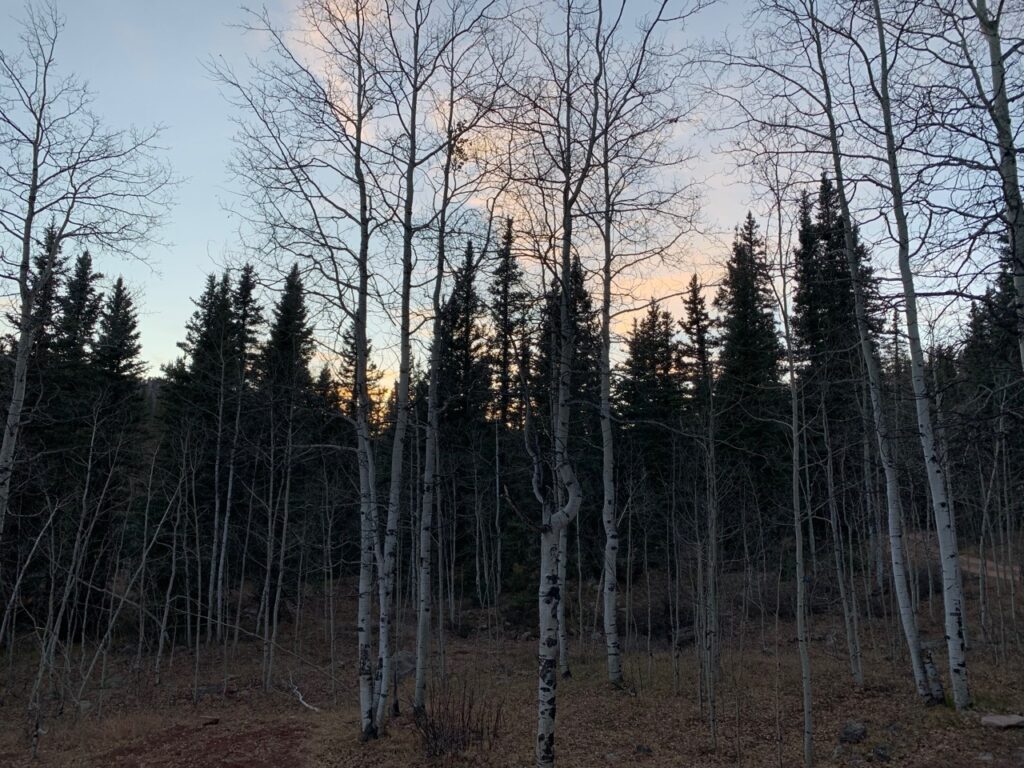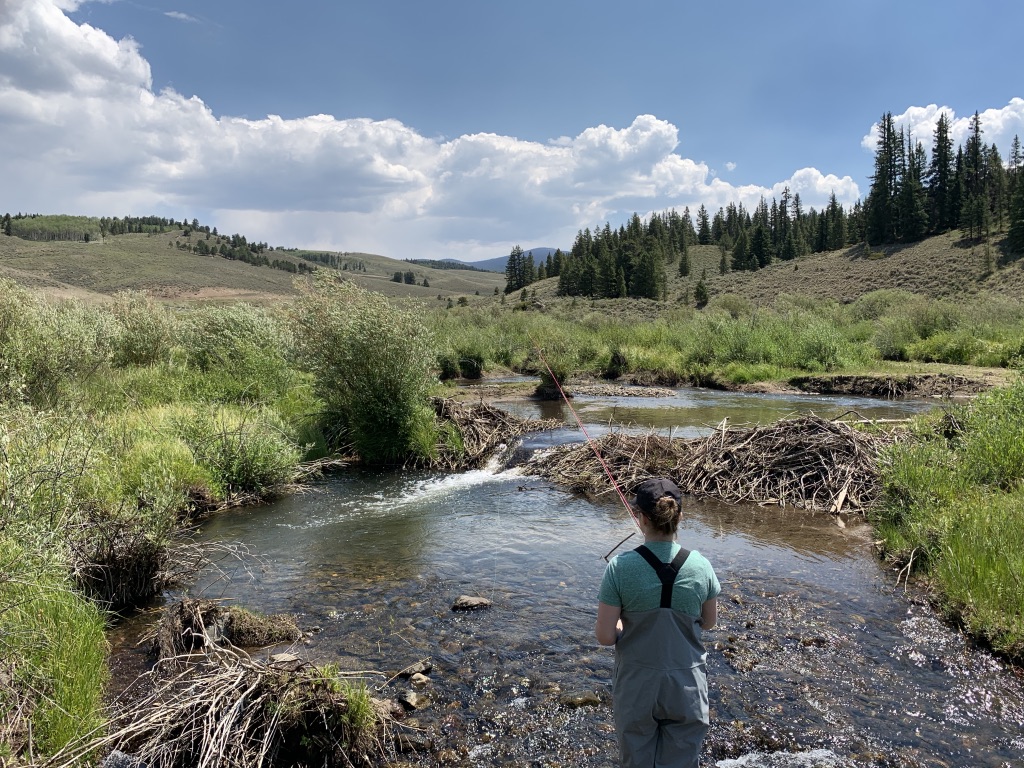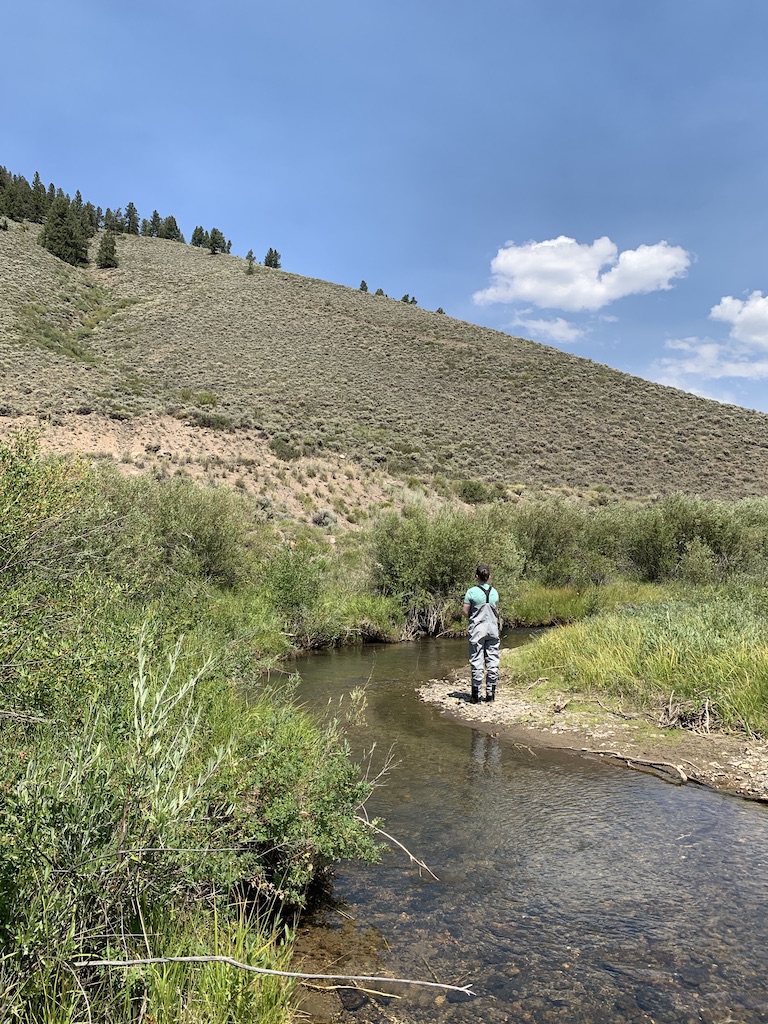I woke to wind buffeting the camper. At least it would help keep the skeeters at bay, despite adding another layer of challenge to the fishing. I drank tea sitting on a bluff overlooking the river, flowing fast and turbid through a narrow canyon below.
Slowly the others stirred to life and joined me.
“I think we should go above the reservoir,” she said. “If anything, it looks murkier down here than yesterday.”
We nodded agreement. I’d fished above the reservoir once before, ten or more years ago. A return would be welcome.
“I think I’ll wet wade,” I said, preferring to tackle the trail in hiking garb rather than waders, and wanting to keep the weight in my pack to a minimum.
Dust devils swirled across the gravel as we drove higher into the mountains. We stopped to drag a fresh deadfall from the road. We slowed for several bike riders heading the opposite direction, looks of grim determination on their faces. After a half hour we gained our first glimpse of the reservoir, studded with white caps, rollers breaking against the dam wall. Snow-capped peaks framed the skyline to the west. I pulled into a turn out and grabbed my phone to take a photo and a surge in the wind caught me off balance, almost setting me on my chuff.
“If nothing else, it’ll be a pleasant walk out and back,” opined the Optimist among us. Spending a good portion of his days on a fishing boat off the Alaskan coast, he came well qualified as a judge of gales and rollers.
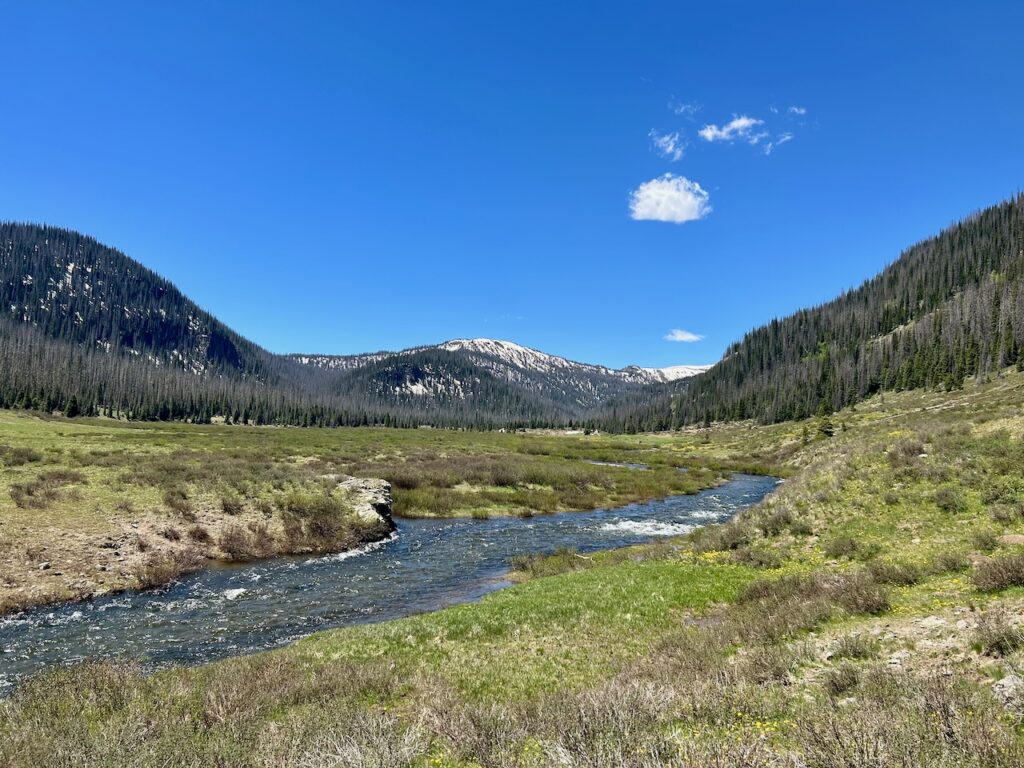
The road terminated and we took to the trail leading toward the snow capped peaks. Feeder streams still ran high, necessitating seeking out places to cross where deadfall provided a bridge. The first mile kept to the trees before the trail emerged into more open country where we looked down upon a meadow a half-mile across that tapered toward the mountains.
The river snaked at speed through the meadow, willow and alder growing along its banks. From our vantage point, gentle holding water for fish appeared sparse. While the others elected to fish streamers, taking the need for a dead drift out of the equation I, ever the tragic, elected to attempt to fish with a dry fly.
Despite the wind I managed multiple good drifts close to undercut banks, to no avail. The first time I set foot into the water I regretted not having waders, my lower extremities getting an instant ice-cream headache for my troubles. Standing in one place for longer than thirty seconds invited loosing feeling in one’s feet.
For several hours we leap-frogged upstream, one fish hooked but not landed the sum total of our combined efforts. We sat on a bluff and took a late lunch. Across the far side of the valley a waterfall cascaded out of a rock fissure like a giant white veil. Elsewhere, a second waterfall remained frozen in a shaded crevice high in a granite buttress. Closer to where we sat, movement in a patch of alder along the riverbank betrayed a bull moose, ambling and feeding with the insouciance of one who knows size does in fact matter. Overhead, a juvenile bald eagle battled the updrafts, wings clumsy and uncoordinated, like a teenager struggling with a growth spurt.
By now the lure of the beer cooler back at camp began to outweigh the draw of what lay further upstream. I recalled a place I’d fished earlier, where my inattention had spooked a nice fish from it’s lie.
“I’m going to give that place one more shot on the way down,” I said. “Maybe the fish has come back.”
This time I approached the lie from upstream, wading thigh-deep across a narrow channel to the head of a gravel bar with a few inches of water flowing across its surface. At the bottom end of the gravel bar two flows co-joined, and in that seam the fish had earlier sat.
As I made my first cast, landing the streamer off to one side and letting the current swing it into the lie, I realized my walking across the gravel bar had stirred up muddy sediment that drifted inexorably toward the lie. I had time for three or four more casts before any surprise would be ruined.
Two casts later the rod jumped in my hand in response to an aggressive take. Tip high, I stripped line hard, not wanting to let the fish get into the cut bank or any further downstream. Soon, I held a chunky brown in one hand and slipped the hook from its mouth, to the applause of the peanut gallery.
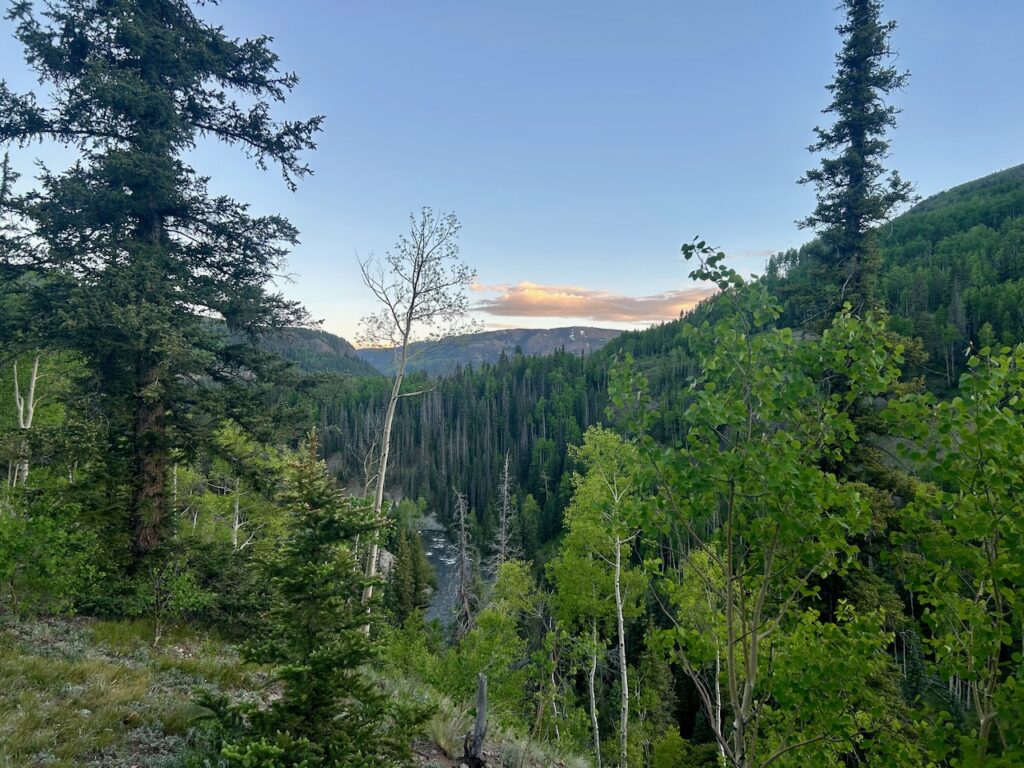
An hour later, back on the bluff at camp, we sat with cold beer replacing morning’s caffeine.
“Told you it was a great day for a stroll in the high country,” reminded the Optimist.
In that I could brook no argument.

